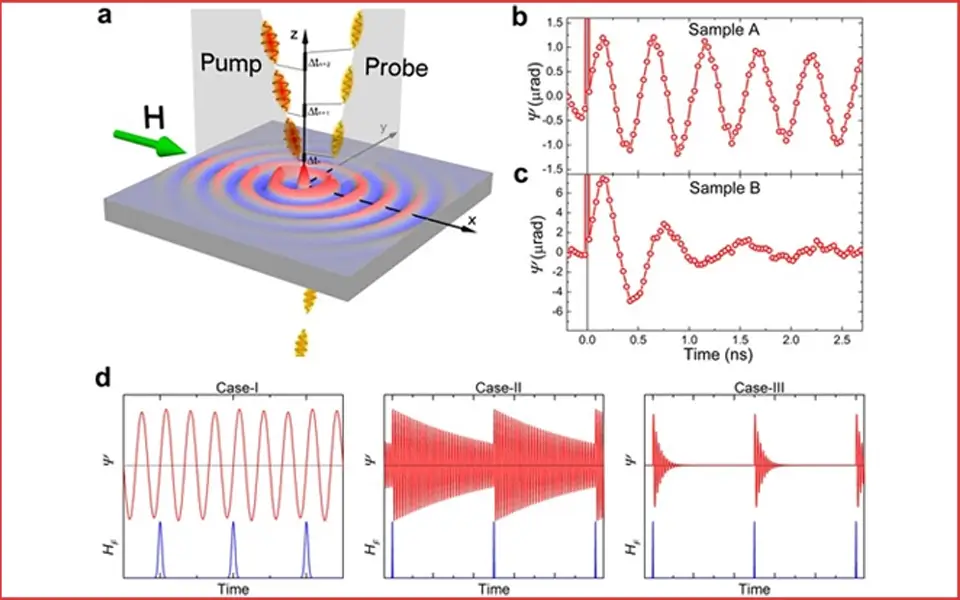Introduction
Researchers have announced that they have successfully generated direct spin currents using ultrashort laser pulses in 2024. For this invention, which was successfully implemented, the newly developing field of spintronics will become transformed. Research in this field has received great attention because it has the potential to carry out efficient realization of faster and more energy-effective electronic devices on the basis of the intrinsic spin of the electrons apart from their charge. The direct control of such spin currents is possible within only a few femtoseconds (1 femtosecond = 10^-15 seconds). This sets new horizons for ultrafast data processing and efficient energy transfer in electronic systems.
Background and Previous Techniques
Indirect mechanisms already produced laser-induced spin currents. The laser energy has to be transferred to a magnetic material that would eventually create a spin-polarized electron current during the redistribution of the energy. However, the redistribution process was more than 100 fs in time, which would limit the potential applications of the approach to high-speed purposes.
On the other hand, the direct generation of spin currents through ultrashort laser pulses yields much faster results, which take only a few femtoseconds. This acceleration is very important because it allows for faster switching times in spintronic devices that may result in enhanced performance technologies like those in magnetic memory and data processing units.
The 2024 Breakthrough
An international team of physicists demonstrated the new technique using a specially fabricated sample composed of 20 alternating layers of cobalt and platinum. The magnetic materials were chosen because they are capable of helping to align the spins of the electrons. In this work, through an external magnetic field applied perpendicular to the layers, the team aligned the spins within the material in which the laser-induced spin current would operate.
The researchers applied two pulses of laser for the experiment. Initially, they probed the material with an ultrashort pulse of circularly polarized light that was subfemtosecond, with the objective of measuring the initial alignment of spin. Then, they shot the second pulse: a 4-fs linearly polarized infrared laser, which induced a significant rearrangement of the spins. Such a process led to the fast change in magnetic order, particularly in cobalt layers, which decreased by 10% within the first 2 femtoseconds of elapsed time. However, the magnetic order in the platinum layers increases during the same time.
This restructuring implies laser pulses had directly excited a flow of spin-aligned electrons from cobalt to platinum; that is, it creates a spin current. Supporting these experimental results were density-functional theory calculations—a type of computational method describing electron interactions.
For Spintronics
The generation of spin currents on this scale is significant for the future development of spintronics. In fact, spin currents are at the core of all spintronic devices, which will replace their traditional counterparts at higher speeds and with greater energy efficiency and data storage capacity.
Direct generation of spin currents within a few femtoseconds can now be done and indeed promises to increase the processing speeds of data considerably. Toward such an end, the operating speed of devices for spintronics can possibly be much faster than what is at present. In addition, the energy loss during the process is also minimized as it does not suffer from incoherent heating, as experienced with earlier approaches.
Furthermore, this laser-induced method can bring the kind of precision that may enable upscaling and making spintronic devices very flexible. The direction and shape of the laser light can be controlled, which grants the researchers all possible control over the spin currents that are being generated. This type of solution can make the possibility of highly optimized devices with specific functionalities tailored for varied applications, from quantum computing to better memory systems.
Future Directions
The research team looks into the future and predicts that they will soon probe existing spintronic structures under femtosecond laser pulses. Moreover, they have explored the possibility of generating even spin currents on such a short timescale as attoseconds, that is, 10^-18 seconds. Such a development would take ultrafast electronics to the next frontier of technological feasibility.
There is optimism over the future of spintronics after this discovery. Markus Münzenberg, who specializes in surface and interface physics, claimed that once the transfer of spin-currents has now been detected on such very short timescales, this will be the basis of a basic step towards making those devices function by having a few femtoseconds. Marie Barthelemy, who is specializing in ultra-fast laser devices, said that an increased speed of these currents is important in improving the data processing rates and also obtaining a reduction in loss of energy.
Conclusion
The most significant finding in 2024 is related to the generation of direct spin current through ultra-short laser pulses, which will certainly resonate into the future of electronics as well as spintronics. This technology can potentially allow for devices that are faster and, therefore, much more efficient due to the drastic reduction in timescales for creating spin current. The technology has the potential to revolutionize the design and performance of electronic systems in the years to come as scientists explore this new field.



